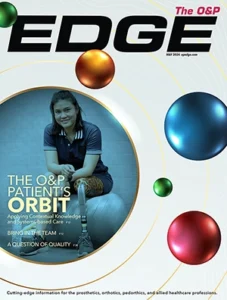Powered exoskeletons can enable users with gait disabilities to ambulate in an upright posture, and can potentially bring other clinical benefits. To date, the U.S. Food and Drug Administration (FDA) has approved marketing of the ReWalk™ Personal Exoskeleton as a class II medical device with special controls, and the Indego™ and Ekso™ have also received regulatory approval. However, the regulatory science of powered exoskeletons is still developing, the types and extent of probable risks of these devices are yet to be understood, and directly applicable industry standards are lacking.
To address this gap, a team of researchers conducted a literature review for which they searched the Manufacturer and User Facility Device Experience, Clinicaltrials.gov, and PubMed databases for reports of adverse events and inclusion and exclusion criteria involving the use of lower-limb powered exoskeletons. Risk management in current lower-limb exoskeletons and how existing regulations address risk assessment and mitigation was also reviewed.
The following are the risks identified by the FDA when it reviewed ReWalk’s de novo application, as well as risks identified by the study authors: instability, falls, and associated injuries; bruising, skin abrasion, pressure sores, and soft tissue injury; diastolic hypertension, and changes in blood pressure and heart rate; adverse tissue reaction; premature battery failure; interference with other electrical equipment/devices; burns, electrical shock; device malfunction resulting in unanticipated operation (e.g., device stoppage, unintended movement; user error; bone fracture (other than caused by falling); and long-term secondary effects (i.e., what would happen when a person with low bone density repeatedly uses an exoskeleton). The study authors also found that current inclusion and exclusion criteria were found to be diverse and reported that adverse events and identified risks of current devices are wide-ranging—thus, current regulations, standards, and regulatory procedures for medical device applications in the United States, Europe, and Japan were also compared.
The authors conclude that there is a need to raise awareness of probable risks associated with the use of powered exoskeletons and to develop adequate countermeasures, standards, and regulations. Toward this aim, they compiled related standards that the FDA recommends and encourage regulators and the industry to work together to release practical guidelines and standards for this field. They also encourage more computational modeling, bench testing, preclinical and clinical studies, and post-surveillance reports from both manufacturers and independent groups—and that data be collected and reported in more systematical manner. Suggested areas of study include risk concerns such as falls, fractures, and long-term adverse effects of using exoskeletons; user error; and skin/tissue damage; as well as potential risks of deploying exoskeletons safely outside of the clinic.
The literature review was published May 9, in the open-access journal Medical Devices: Evidence and Research.
Diagram courtesy of the study authors and Dove Press.




